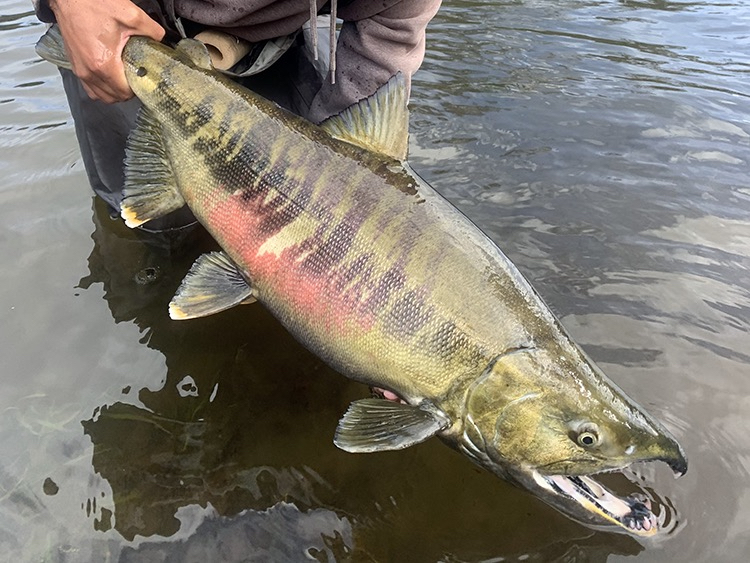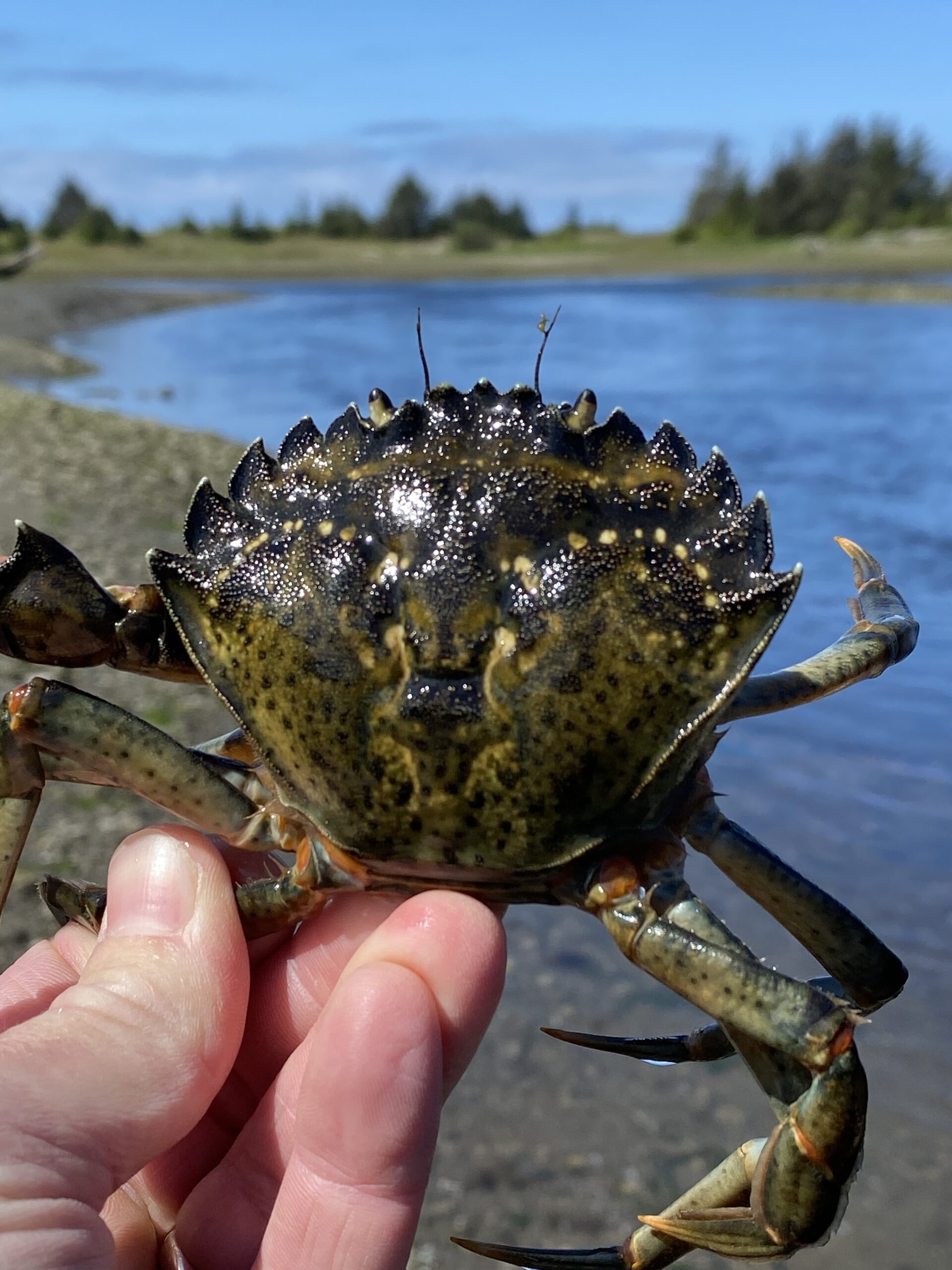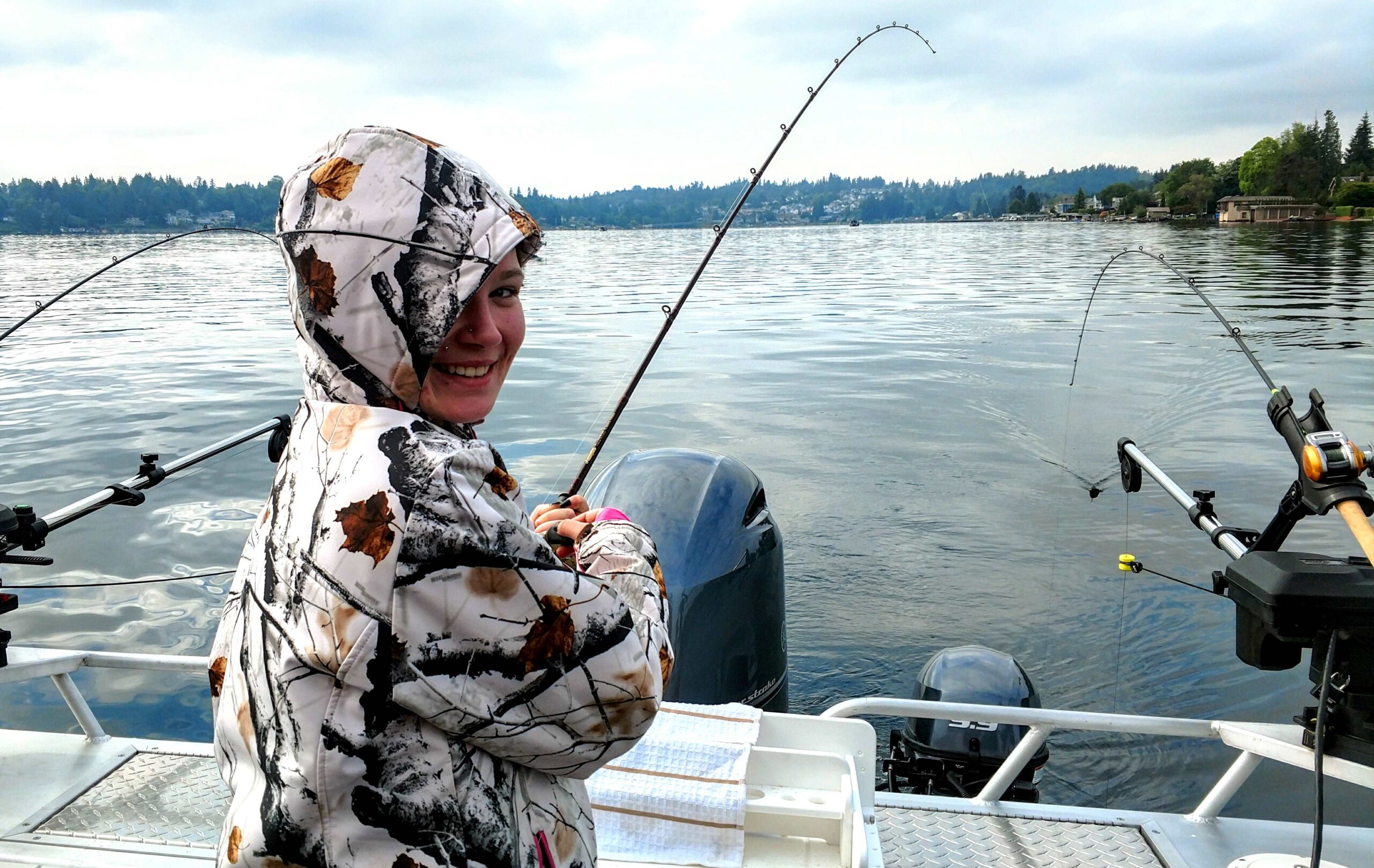Here we go…Fall is upon us. The Sockeye have done their thing, Chinook have made their way into the rivers and are spawning, and the Coho are showing up until January in some places. Since it is an even year in the Pacific Northwest, we will not see a return of pink salmon this year. That leaves us with the fifth species of salmon, the Chum salmon.
Chum salmon, also known as dog salmon or keta salmon, is a species of anadromous salmon native to the coastal rivers of the North Pacific and the Beringian Arctic. The Chum is an often-overlooked species that is not targeted by recreational anglers quite like Chinook and Coho. The primary reason for this is that we don’t usually target or catch them in the salt, and they turn very quickly upon hitting the fresh water in our tributary rivers.
Since they are not great table fair unless caught at the perfect time, we tend to focus on the other species that remain edible after they have spent weeks or months in the freshwater. It is important to note that Chum are targeted in the salt water up and down the Pacific Coast, but they are talked about much less than their coveted cousins, the Chinook and Coho.
Chum salmon are typically commercially caught and marketed as canned or smoked products and exported to Asia and Europe. Their flesh tends to be lighter in color and oil content than other species of salmon, but its firmness and flavor, if caught fresh, make chum salmon pleasant table fair.
One thing to be said for the mighty Chum however is that pound for pound, they are one of the toughest and hardest fighting salmon species. They can grow to nearly the size of Chinook with an average weight of 8-15 pounds, and large fish weighing up to 35 lbs. Chum have an ocean coloration of silvery blue-green with some indistinct spotting in a darker shade, and a paler belly.
When they move into fresh water the color changes quickly to dark olive green and the belly color deepens. When adults are near spawning, they have purple blotchy streaks near the caudal peduncle that resemble stripes that get darker towards the tail. Spawning males typically grow an elongated snout or kype, their lower fins become tipped with white, and they have enlarged teeth. This may explain the nickname “dog” salmon. They are also sold for both dog food and are popular in Italy as food for prisoners.
As mentioned, Chum tend to transition and turn very quickly, even before they enter freshwater. Their flesh is not good for consumption when they begin to turn, but then again, to each his own. Also, Chum migrate, spawn, and die rather quickly, usually within a period of a few weeks after entering fresh water. The key is to know when they show up and get after them while you have a short window of opportunity.
Since returns of Chum are dwindling in many of our rivers, we are often not allowed to target them and when we are allowed to, they often must be released. Check your WDFW regulations or call a local office for information on Chum salmon and ask about volunteer opportunities to catch them for broodstock programs that are being used to restore the runs in some of our rivers.
I have participated in the broodstock collection on the Snohomish River system for the past few years, focusing on the Skykomish River. We catch chum and safely transport them to net pens that are located up and down the river. The fish are collected and taken to a hatchery where the milt and eggs are collected, and the salmon are reared for release back into the system. In my opinion, this is the most effective method to help Chum recover and increase the annual returns to our rivers.
Chum Salmon are usually very aggressive once they enter the river. They will travel and hold in slow to moderate currents that are deeper than 4 feet. You can target them from the tidewater all the way up to their spawning grounds. Once they transition into spawning mode, and flood into the shallow spawning areas, leave them alone and let them do their thing. We really need them to procreate to ensure their long-term sustainability.

Catching Chum can be a lot of fun. They are aggressive fish and fight much like a Chinook. Chum mostly feed on plankton and shrimp in the ocean. Purple, pink, green/chartreuse are great colors for targeting Chum. Small hoochies work well. Tie up your hoochies with a 30-40-lb fishing line with short leaders of two to three feet behind an inline sinker or use hardware such as spinners with hoochie skirts to target the soft edges and corners. As with any salmon, you can catch Chum on pretty much anything and anywhere in the river but understanding their habits will increase your catch ratio.
The following techniques will offer the shore and boat anglers some great options. You can try using a float/bobber and jig (tip with shrimp or prawn if allowed), twitching jigs much like Coho, casting or pulling plugs, drift fishing a corky and yarn tipped with prawn/shrimp or flavored with a scent such as herring, sardine, shrimp and anchovy which are awesome for Chums, or you can try your hand at throwing flies. I am a big fan of using hardware and my favorite is a Blue Fox Vibrax Size 5 spinner in chartreuse or pink with a hoochie skirt. I find this to be the most fun and active method to cover water and entice a testy Chum to bite in pretty much any type of water. When they decide to bite your offering, it is game on.
Check the regs and get out there. Catching Chum is a ton of fun. You can catch your Coho for the BBQ and freezer and if allowed, wrap up your day on the water targeting some Chum for the fight of it. Have fun and good fishing!





















